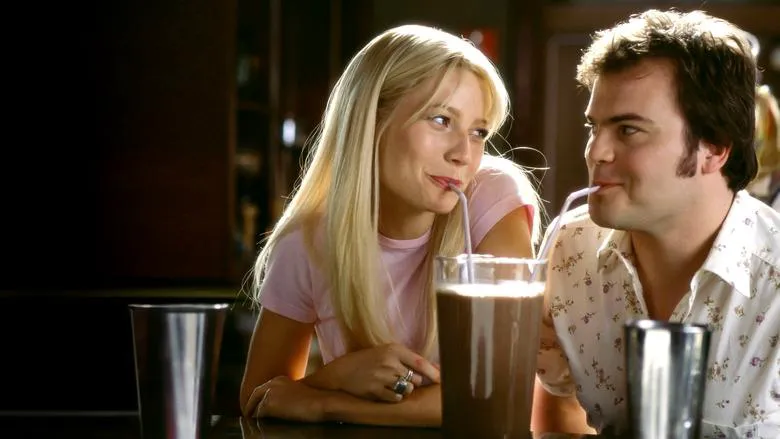Shallow Hal: More Than Meets the Eye or Just Plain Shallow?
Gwyneth Paltrow, often compared to Julia Roberts in stature and earnings, takes a bold step in “Shallow Hal,” transforming herself into what’s considered a less conventionally attractive version of herself. However, this transformation is arguably the film’s only saving grace as a comedy, at least a successful one.
For a significant portion of the movie, Paltrow is, unsurprisingly, portrayed as beautiful – something we inherently know to be true. The “monstrousness” of her appearance doesn’t quite resonate, challenging Hegel’s assertion that comedy lacks seriousness and its conflicts are easily resolved. Lacking knowledge of this “inner beauty” and only seeing the “monster”, there is no comedy left at all.
The Set-Up: A Hypnotic Twist
The narrative centers around Hal (Jack Black), a well-meaning but somewhat awkward individual perpetually unlucky in love. He relentlessly pursues conventionally attractive women, only to face constant rejection. Blissfully unaware of how he’s perceived by these women, his luck takes a turn when he encounters a self-help guru who hypnotizes him.
This encounter fundamentally alters Hal’s perception, enabling him to see the inner beauty of individuals – their graceful, innocent souls. Ironically, many of these women appear less flattering viewed under the restrictive beauty standards already in place.
Farrelly Brothers’ Territory: Visuals and Message
Paltrow’s character happens to be Rosemary, the daughter of Hal’s boss, providing fertile ground for the Farrelly brothers’ signature comedic style from works like “Dumb and Dumber”. Hal’s colleagues, still free from the hypnosis, perceive Rosemary as monstrous, further contrasting how Hal sees her. This effect is portrayed through visual gags: we experience the world through Hal’s eyes, yet glimpse the perceptions of those around him.
Paltrow gracefully dives into a pool, but the resulting splash overwhelms a nearby pizzeria. While Rosemary delicately rests on a kitchen table, her father is heartbroken by her appearance. But this disconnect begs the questions: What exactly is the joke the movie is trying to point out?
A More Deceptive Underlying Message
Despite masking it as an empowerment message about seeing “inner beauty,” the Farrelly brothers seem to contradict this thesis. Even after being unhypnotized, Jack Black’s character stays with Rosemary. But the fat suit turns her less into a big cute girl, and more into an actual monster. Despite the makeup or prosthetics in reality, she still looks repulsive. Black, without any movie magic camera trickery. The movie, therefore, argues that ugly Hal will be matched with ugly Rosemary for all of eternity. That no matter how many noble acts the soul carries out, beauties will be paired with hansom men, and the ugly with the ugly.
Unfortunately, it seems apparent the Farrelly brothers miss this apparent doom, and pass it over as frivolousness. How much can you hate people in order to mock those you deem inferior? The production company even proudly showcases a man with disability in one role, spotted somewhere and hired by them. As he walks on all fours like an orangutan due to the spinal injury, the scene captures it with the man yearning for a wife.
Disturbing Humor or an Unfortunate Oversight?
If one were to argue that The Farrelly brothers don’t perceive their clear taunting displayed in the film, we could say they truly believe it is their “most touching film.” However, perhaps their eyes are viewing through the shards of that crooked mirror from an Andersen fairy tale.
It is through those Anderson shards that we realize it is not a visual impairment at all. But something deeply rooted and defective the eyes simply cannot fix.